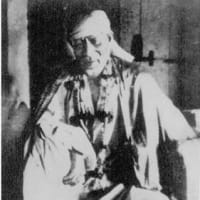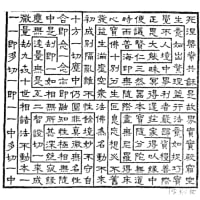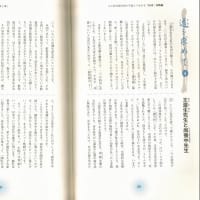ACIM Lesson 4: - 思考から思考を停止することを学ぶ - 04
レッスン1 この部屋の中で私が見ているものには何も意味がありません。
参考サイト:
レッスン2 私は、この部屋の中で見ているもののすべてに、意味を与えています
参考サイト:
レッスン3 私は、この部屋で見ているものを何も理解していません。
参考サイト:
There Is No Spoon - レッスン4「これらの思いには何の意味もない」
レッスン4です。
ワークブックに取り組む際の留意点としては、基本的に一日一レッスンの原則を守るということです。
そのわけは、ワークは実践に目的があるのであって、テキストのように理論的に理解する点に主眼があるわけではないからです。
がんがんやる気があるのであれば、ワークブックを先に進めようとするよりもテキストをじっくり読み込む方に労力を費やした方がよいでしょう。
Workbook Lesson 4
These thoughts do not mean anything.
これらの思いには何の意味もない
These thoughts do not mean anything.
これらの思いには何の意味もない。
They are like the things I see in this room [on this street, from this window, in this place].
それらは、私がこの部屋の中に(この通りに、この窓から、この場所で)目にするものと同じものだ。
Unlike the preceding ones, these exercises do not begin with the idea for the day.
これまでのレッスンとは異なり、この実習は、その日のための考えから始めることはしません。
In these practice periods, begin with noting the thoughts that are crossing your mind for about a minute.
これらの実習の時間は、最初に、一分ほど自分の心の中をよぎる様々な思いに注目することから始めます。
Then apply the idea to them.
そのあとで、今日のテーマの考えを、自分の中を横切る思いに当てはめてみます。
If you are already aware of unhappy thoughts, use them as subjects for the idea.
もしあなたが既に気の滅入るようないくつかの思いに気付いているなら、それらの思いを考えを当てはめる対象として使うとよいでしょう。
-----
ACIM Lesson 4: These thoughts do not mean anything - YouTube
ACIM Lesson 4: These thoughts do not mean anything
Published on Jan 4, 2013
This thought of today is practical and can be applied within your own mind. Be still for a minute, three times a day and become aware of the thoughts that cross consciousness. Do not judge between good and bad thoughts, both are the same. The thought of today applies equally to both. We are learning to recognize that the thinking mind of ego is meaningless, but the true thoughts we share with God are meaningful. This lesson presents us with the opportunity to recognize our current thoughts are meaningless so that we may move beyond them to our TRUE thoughts.
Join our group here: https://www.facebook.com/groups/27656...
Keep in touch with us here: http://www.miraclesofmind.org
2013年1月4日に公開された
今日のこの考えは実用的であり、あなた自身の心の中に適用することができる。分、一日三回のために静止し、意識を渡る思考に気づく。善と悪の考えの間で判断してはいけない、どちらも同じです。今日の思考は両方に等しく適用される。私たちは、エゴの思考の心は無意味であることを認識することを学んでいるが、私たちが神と共有する真の思考は意味がある。このレッスンでは、私たちは私たちの真の考えにそれらを越えて移動するように私たちの現在の考えは無意味であることを認識する機会を私たちに提示します。
ここに私たちのグループに参加します。https : //www.facebook.com/groups/27656を...
私たちと連絡をここにおいてください。 http://www.miraclesofmind.org
レッスン4 これらの思いは何も意味がありません。|『奇跡のコース』ワークブック 365日
レッスン4 これらの思いは何も意味がありません。
-レッスン4 これらの思いは何も意味がありません。これらの思いは私がこの部屋で(この通りで、この窓から、この場所で)見ているものと同じようなものです。
レッスン1,2,3の練習とは異なり、ここでの練習はこの日の考えから始めることはしません。ここでの練習では、あなたのマインドを横切る考えに1分間ほど注目することから始めます。それから、この日の考えをそれらの思いに適用します。不幸な思いをすでに自覚しているならば、それらの思いをこの日の考えの主題として活用してください。しかしながら、あなたが“悪い”と考える思いだけを選ぶことはしないでください。あなたの思いを見つめるように自分自身を訓練すると、思いは実に様々に入り混じった事柄を代表しているために、どんな思いも“良い”と呼ぶことも、“悪い”と呼ぶこともできないことがわかるでしょう。これが、あなたの思いは何も意味がない理由です。
-----
意味のないものはあなたの外側にあり、意味のあるものはあなたの内面にあるとみることを学ぶという長期的な目的の最初の試みです。それはまた、何が同じで、何が異なっているかを認識できるようにあなたのマインドを訓練する始まりでもあります。
A Course In Miracles Daily Lesson | The Daily Workbook Lessons Of A Course In Miracles. - Part 279
Lesson 4 – These thoughts do not mean anything. They are like the things I see in this room [on this street, from this window, in this place]. | Daily Lessons From A Course In Miracles
Unlike the preceding ones, these exercises do not begin with the idea for the day. In these practice periods, begin with noting the thoughts that are crossing your mind for about a minute. Then apply the idea to them. If you are already aware of unhappy thoughts, use them as subjects for the idea. Do not, however, select only the thoughts you think are “bad.” You will find, if you train yourself to look at your thoughts, that they represent such a mixture that, in a sense, none of them can be called “good” or “bad.” This is why they do not mean anything.
In selecting the subjects for the application of today’s idea, the usual specificity is required. Do not be afraid to use “good” thoughts as well as “bad.” None of them represents your real thoughts, which are being covered up by them. The “good” ones are but shadows of what lies beyond, and shadows make sight difficult. The “bad” ones are blocks to sight, and make seeing impossible. You do not want either.
This is a major exercise, and will be repeated from time to time in somewhat different form. The aim here is to train you in the first steps toward the goal of separating the meaningless from the meaningful. It is a first attempt in the long-range purpose of learning to see the meaningless as outside you, and the meaningful within. It is also the beginning of training your mind to recognize what is the same and what is different.
In using your thoughts for application of the idea for today, identify each thought by the central figure or event it contains; for example:
This thought about _______ does not mean anything.
It is like the things I see in this room [on this street, and so on].
You can also use the idea for a particular thought that you recognize as harmful. This practice is useful, but is not a substitute for the more random procedures to be followed for the exercises. Do not, however, examine your mind for more than a minute or so. You are too inexperienced as yet to avoid a tendency to become pointlessly preoccupied.
Further, since these exercises are the first of their kind, you may find the suspension of judgment in connection with thoughts particularly difficult. Do not repeat these exercises more than three or four times during the day. We will return to them later.
レッスン1 この部屋の中で私が見ているものには何も意味がありません。
参考サイト:
レッスン2 私は、この部屋の中で見ているもののすべてに、意味を与えています
参考サイト:
レッスン3 私は、この部屋で見ているものを何も理解していません。
参考サイト:
There Is No Spoon - レッスン4「これらの思いには何の意味もない」
レッスン4です。
ワークブックに取り組む際の留意点としては、基本的に一日一レッスンの原則を守るということです。
そのわけは、ワークは実践に目的があるのであって、テキストのように理論的に理解する点に主眼があるわけではないからです。
がんがんやる気があるのであれば、ワークブックを先に進めようとするよりもテキストをじっくり読み込む方に労力を費やした方がよいでしょう。
Workbook Lesson 4
These thoughts do not mean anything.
これらの思いには何の意味もない
These thoughts do not mean anything.
これらの思いには何の意味もない。
They are like the things I see in this room [on this street, from this window, in this place].
それらは、私がこの部屋の中に(この通りに、この窓から、この場所で)目にするものと同じものだ。
Unlike the preceding ones, these exercises do not begin with the idea for the day.
これまでのレッスンとは異なり、この実習は、その日のための考えから始めることはしません。
In these practice periods, begin with noting the thoughts that are crossing your mind for about a minute.
これらの実習の時間は、最初に、一分ほど自分の心の中をよぎる様々な思いに注目することから始めます。
Then apply the idea to them.
そのあとで、今日のテーマの考えを、自分の中を横切る思いに当てはめてみます。
If you are already aware of unhappy thoughts, use them as subjects for the idea.
もしあなたが既に気の滅入るようないくつかの思いに気付いているなら、それらの思いを考えを当てはめる対象として使うとよいでしょう。
-----
ACIM Lesson 4: These thoughts do not mean anything - YouTube
ACIM Lesson 4: These thoughts do not mean anything
Published on Jan 4, 2013
This thought of today is practical and can be applied within your own mind. Be still for a minute, three times a day and become aware of the thoughts that cross consciousness. Do not judge between good and bad thoughts, both are the same. The thought of today applies equally to both. We are learning to recognize that the thinking mind of ego is meaningless, but the true thoughts we share with God are meaningful. This lesson presents us with the opportunity to recognize our current thoughts are meaningless so that we may move beyond them to our TRUE thoughts.
Join our group here: https://www.facebook.com/groups/27656...
Keep in touch with us here: http://www.miraclesofmind.org
2013年1月4日に公開された
今日のこの考えは実用的であり、あなた自身の心の中に適用することができる。分、一日三回のために静止し、意識を渡る思考に気づく。善と悪の考えの間で判断してはいけない、どちらも同じです。今日の思考は両方に等しく適用される。私たちは、エゴの思考の心は無意味であることを認識することを学んでいるが、私たちが神と共有する真の思考は意味がある。このレッスンでは、私たちは私たちの真の考えにそれらを越えて移動するように私たちの現在の考えは無意味であることを認識する機会を私たちに提示します。
ここに私たちのグループに参加します。https : //www.facebook.com/groups/27656を...
私たちと連絡をここにおいてください。 http://www.miraclesofmind.org
レッスン4 これらの思いは何も意味がありません。|『奇跡のコース』ワークブック 365日
レッスン4 これらの思いは何も意味がありません。
-レッスン4 これらの思いは何も意味がありません。これらの思いは私がこの部屋で(この通りで、この窓から、この場所で)見ているものと同じようなものです。
レッスン1,2,3の練習とは異なり、ここでの練習はこの日の考えから始めることはしません。ここでの練習では、あなたのマインドを横切る考えに1分間ほど注目することから始めます。それから、この日の考えをそれらの思いに適用します。不幸な思いをすでに自覚しているならば、それらの思いをこの日の考えの主題として活用してください。しかしながら、あなたが“悪い”と考える思いだけを選ぶことはしないでください。あなたの思いを見つめるように自分自身を訓練すると、思いは実に様々に入り混じった事柄を代表しているために、どんな思いも“良い”と呼ぶことも、“悪い”と呼ぶこともできないことがわかるでしょう。これが、あなたの思いは何も意味がない理由です。
-----
意味のないものはあなたの外側にあり、意味のあるものはあなたの内面にあるとみることを学ぶという長期的な目的の最初の試みです。それはまた、何が同じで、何が異なっているかを認識できるようにあなたのマインドを訓練する始まりでもあります。
A Course In Miracles Daily Lesson | The Daily Workbook Lessons Of A Course In Miracles. - Part 279
Lesson 4 – These thoughts do not mean anything. They are like the things I see in this room [on this street, from this window, in this place]. | Daily Lessons From A Course In Miracles
Unlike the preceding ones, these exercises do not begin with the idea for the day. In these practice periods, begin with noting the thoughts that are crossing your mind for about a minute. Then apply the idea to them. If you are already aware of unhappy thoughts, use them as subjects for the idea. Do not, however, select only the thoughts you think are “bad.” You will find, if you train yourself to look at your thoughts, that they represent such a mixture that, in a sense, none of them can be called “good” or “bad.” This is why they do not mean anything.
In selecting the subjects for the application of today’s idea, the usual specificity is required. Do not be afraid to use “good” thoughts as well as “bad.” None of them represents your real thoughts, which are being covered up by them. The “good” ones are but shadows of what lies beyond, and shadows make sight difficult. The “bad” ones are blocks to sight, and make seeing impossible. You do not want either.
This is a major exercise, and will be repeated from time to time in somewhat different form. The aim here is to train you in the first steps toward the goal of separating the meaningless from the meaningful. It is a first attempt in the long-range purpose of learning to see the meaningless as outside you, and the meaningful within. It is also the beginning of training your mind to recognize what is the same and what is different.
In using your thoughts for application of the idea for today, identify each thought by the central figure or event it contains; for example:
This thought about _______ does not mean anything.
It is like the things I see in this room [on this street, and so on].
You can also use the idea for a particular thought that you recognize as harmful. This practice is useful, but is not a substitute for the more random procedures to be followed for the exercises. Do not, however, examine your mind for more than a minute or so. You are too inexperienced as yet to avoid a tendency to become pointlessly preoccupied.
Further, since these exercises are the first of their kind, you may find the suspension of judgment in connection with thoughts particularly difficult. Do not repeat these exercises more than three or four times during the day. We will return to them later.






















